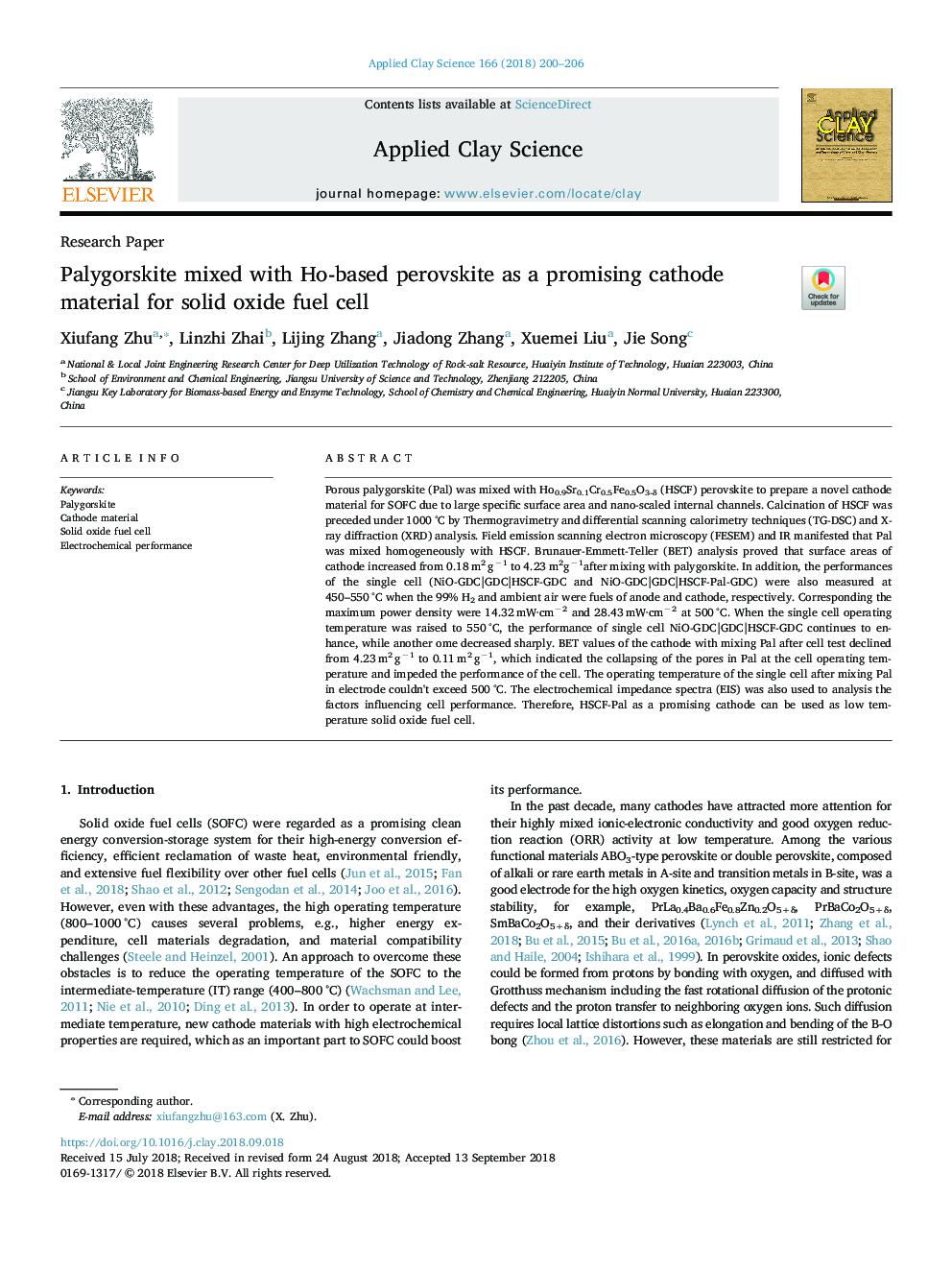| Article ID | Journal | Published Year | Pages | File Type |
|---|---|---|---|---|
| 11026515 | Applied Clay Science | 2018 | 7 Pages |
Abstract
Porous palygorskite (Pal) was mixed with Ho0.9Sr0.1Cr0.5Fe0.5O3-δ (HSCF) perovskite to prepare a novel cathode material for SOFC due to large specific surface area and nano-scaled internal channels. Calcination of HSCF was preceded under 1000â¯Â°C by Thermogravimetry and differential scanning calorimetry techniques (TG-DSC) and X-ray diffraction (XRD) analysis. Field emission scanning electron microscopy (FESEM) and IR manifested that Pal was mixed homogeneously with HSCF. Brunauer-Emmett-Teller (BET) analysis proved that surface areas of cathode increased from 0.18â¯m2â¯gâ1 to 4.23 m2gâ1after mixing with palygorskite. In addition, the performances of the single cell (NiO-GDC|GDC|HSCF-GDC and NiO-GDC|GDC|HSCF-Pal-GDC) were also measured at 450-550â¯Â°C when the 99% H2 and ambient air were fuels of anode and cathode, respectively. Corresponding the maximum power density were 14.32â¯mW·cmâ2 and 28.43â¯mW·cmâ2 at 500â¯Â°C. When the single cell operating temperature was raised to 550â¯Â°C, the performance of single cell NiO-GDC|GDC|HSCF-GDC continues to enhance, while another ome decreased sharply. BET values of the cathode with mixing Pal after cell test declined from 4.23â¯m2â¯gâ1 to 0.11â¯m2â¯gâ1, which indicated the collapsing of the pores in Pal at the cell operating temperature and impeded the performance of the cell. The operating temperature of the single cell after mixing Pal in electrode couldn't exceed 500â¯Â°C. The electrochemical impedance spectra (EIS) was also used to analysis the factors influencing cell performance. Therefore, HSCF-Pal as a promising cathode can be used as low temperature solid oxide fuel cell.
Related Topics
Physical Sciences and Engineering
Earth and Planetary Sciences
Geochemistry and Petrology
Authors
Xiufang Zhu, Linzhi Zhai, Lijing Zhang, Jiadong Zhang, Xuemei Liu, Jie Song,
